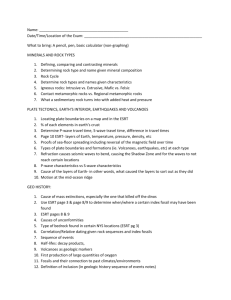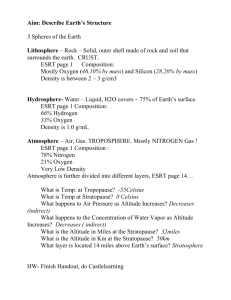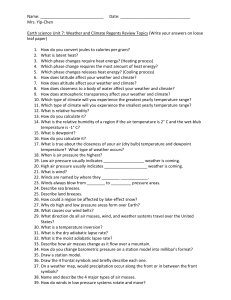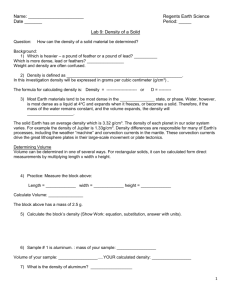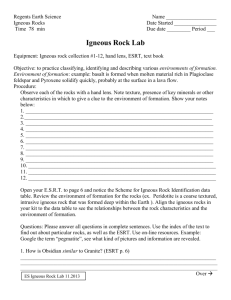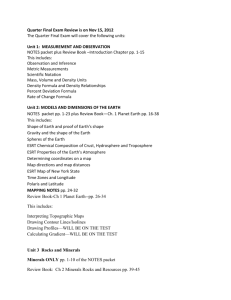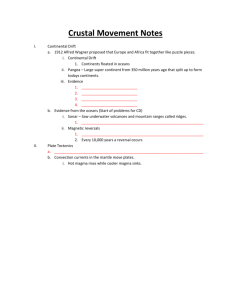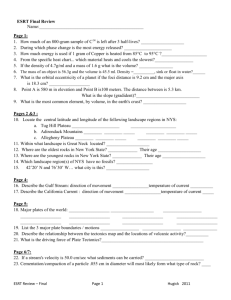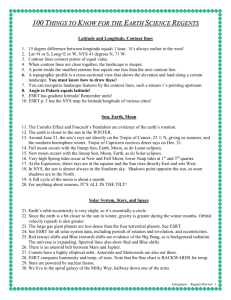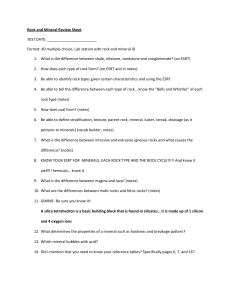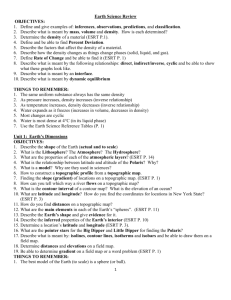Earth Science Final Review – 2015
advertisement
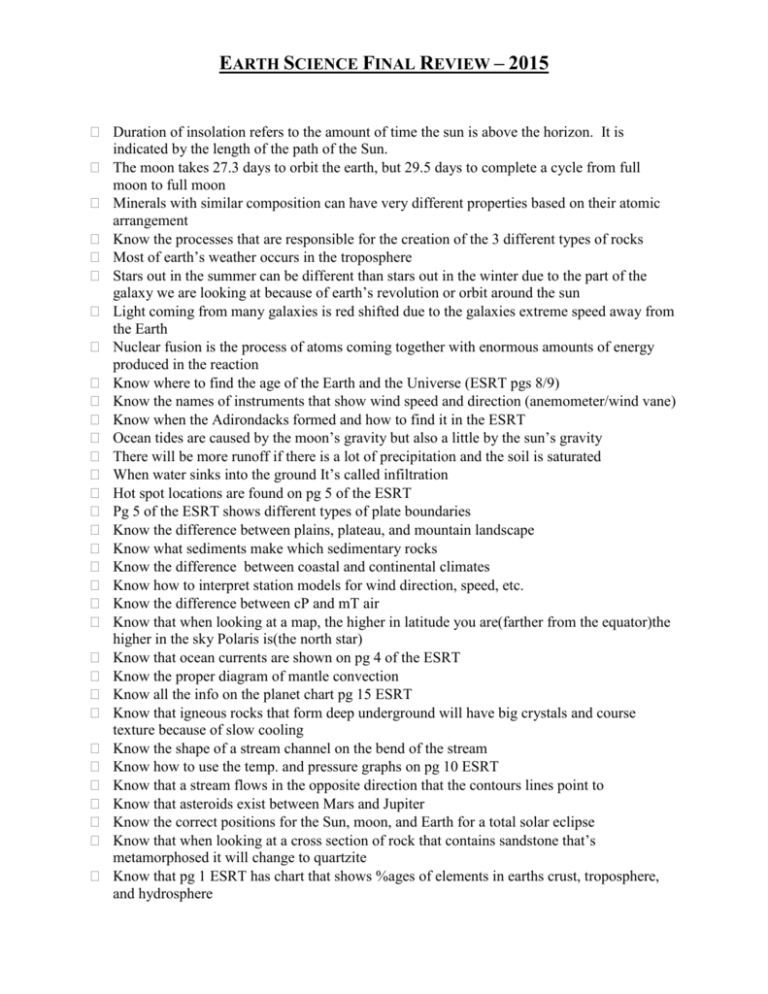
EARTH SCIENCE FINAL REVIEW – 2015 Duration of insolation refers to the amount of time the sun is above the horizon. It is indicated by the length of the path of the Sun. The moon takes 27.3 days to orbit the earth, but 29.5 days to complete a cycle from full moon to full moon Minerals with similar composition can have very different properties based on their atomic arrangement Know the processes that are responsible for the creation of the 3 different types of rocks Most of earth’s weather occurs in the troposphere Stars out in the summer can be different than stars out in the winter due to the part of the galaxy we are looking at because of earth’s revolution or orbit around the sun Light coming from many galaxies is red shifted due to the galaxies extreme speed away from the Earth Nuclear fusion is the process of atoms coming together with enormous amounts of energy produced in the reaction Know where to find the age of the Earth and the Universe (ESRT pgs 8/9) Know the names of instruments that show wind speed and direction (anemometer/wind vane) Know when the Adirondacks formed and how to find it in the ESRT Ocean tides are caused by the moon’s gravity but also a little by the sun’s gravity There will be more runoff if there is a lot of precipitation and the soil is saturated When water sinks into the ground It’s called infiltration Hot spot locations are found on pg 5 of the ESRT Pg 5 of the ESRT shows different types of plate boundaries Know the difference between plains, plateau, and mountain landscape Know what sediments make which sedimentary rocks Know the difference between coastal and continental climates Know how to interpret station models for wind direction, speed, etc. Know the difference between cP and mT air Know that when looking at a map, the higher in latitude you are(farther from the equator)the higher in the sky Polaris is(the north star) Know that ocean currents are shown on pg 4 of the ESRT Know the proper diagram of mantle convection Know all the info on the planet chart pg 15 ESRT Know that igneous rocks that form deep underground will have big crystals and course texture because of slow cooling Know the shape of a stream channel on the bend of the stream Know how to use the temp. and pressure graphs on pg 10 ESRT Know that a stream flows in the opposite direction that the contours lines point to Know that asteroids exist between Mars and Jupiter Know the correct positions for the Sun, moon, and Earth for a total solar eclipse Know that when looking at a cross section of rock that contains sandstone that’s metamorphosed it will change to quartzite Know that pg 1 ESRT has chart that shows %ages of elements in earths crust, troposphere, and hydrosphere Know the names of glacial deposits…drumlins, outwash, etc. Know heliocentric theory Know that when you have similar sized beads in a jar compared to another jar of bigger or smaller beads, the porosity will be the same Know the proper placement of frontal symbols on a weather map Know the proper flow of air around a low pressure system Know that interior models of the Earth were developed using seismic wave data Know that the age of fossils and fossil info is found on pg 8-9 in the ESRT Know that Earthquakes and Volcanoes are found on the worlds plate boundaries shown on pg 5 Know that density =mass/volume Know how to determine latitude and longitude on a map Know why some locations on Earth would receive p wave after an earthquake, but no S waves Know how to use the RH chart on pg 12 ESRT Know the shorter the distance between p and s waves on a seismogram, the closer the earthquake Know the differences between p and s waves Know the 3 types of plate boundaries and the differences between them Know how to use pgs 2 and 3 in the ESRT
